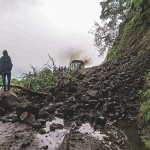Famous Churches Carved From Walls Of Stone
African adventures continue for Dr Anne Small, GP with Moonee Ponds MindBody Health Centre, as she lands in Lalibela, northern Ethiopia, home to famous ancient churches.
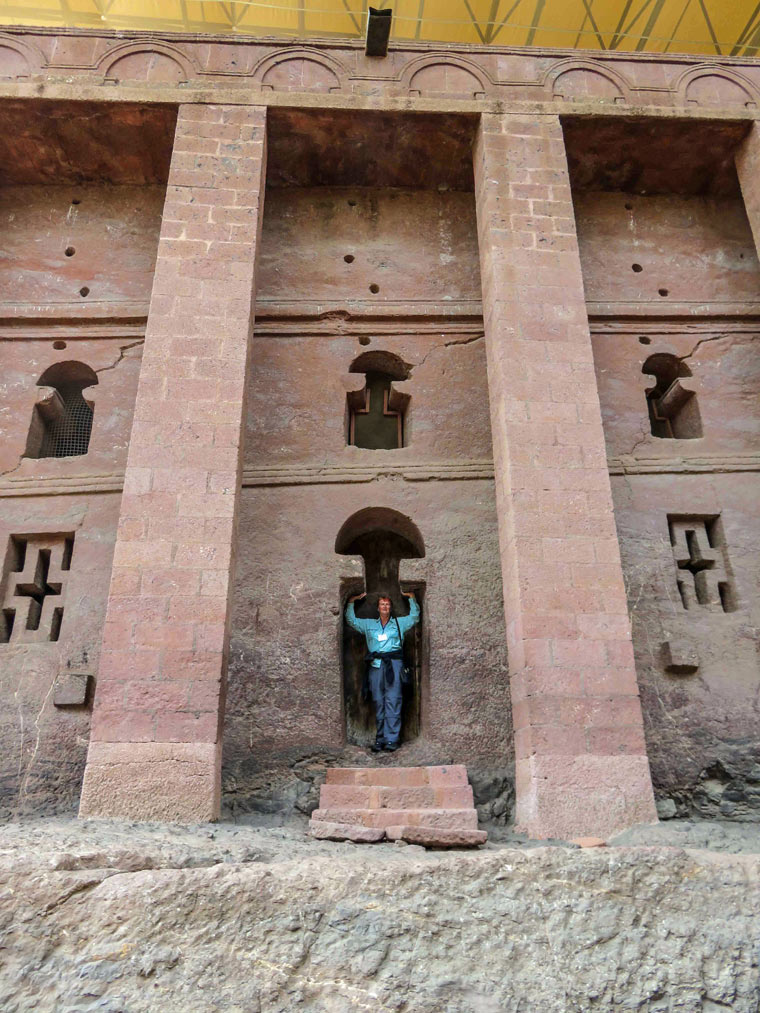 We visited the first group of churches in the afternoon and what an amazing experience! All the churches are carved out of huge single blocks of stone, created first by chipping the rock to form enormous pits around these huge blocks, and then hollowing out the blocks of granite to form the interior of the church. To add to the intrigue, the enormous church stone is not the same as the surrounding basalt stone!
We visited the first group of churches in the afternoon and what an amazing experience! All the churches are carved out of huge single blocks of stone, created first by chipping the rock to form enormous pits around these huge blocks, and then hollowing out the blocks of granite to form the interior of the church. To add to the intrigue, the enormous church stone is not the same as the surrounding basalt stone!
The first one that we entered was Bet Medhane Alem measuring 33.5 metres x 23.5 metres and said to be the largest rock-hewn church in the world. Standing inside these churches I had to remind myself that each one is carved out of one huge block of stone – it’s an amazing, eerie feeling.
King Lalibela commissioned the building of these churches between 1137 and 1270 AD and it is said that one church could take 24 years to complete hewing it out of the granite. In one church the priest showed us a bronze ceremonial cross which was 900 years old!
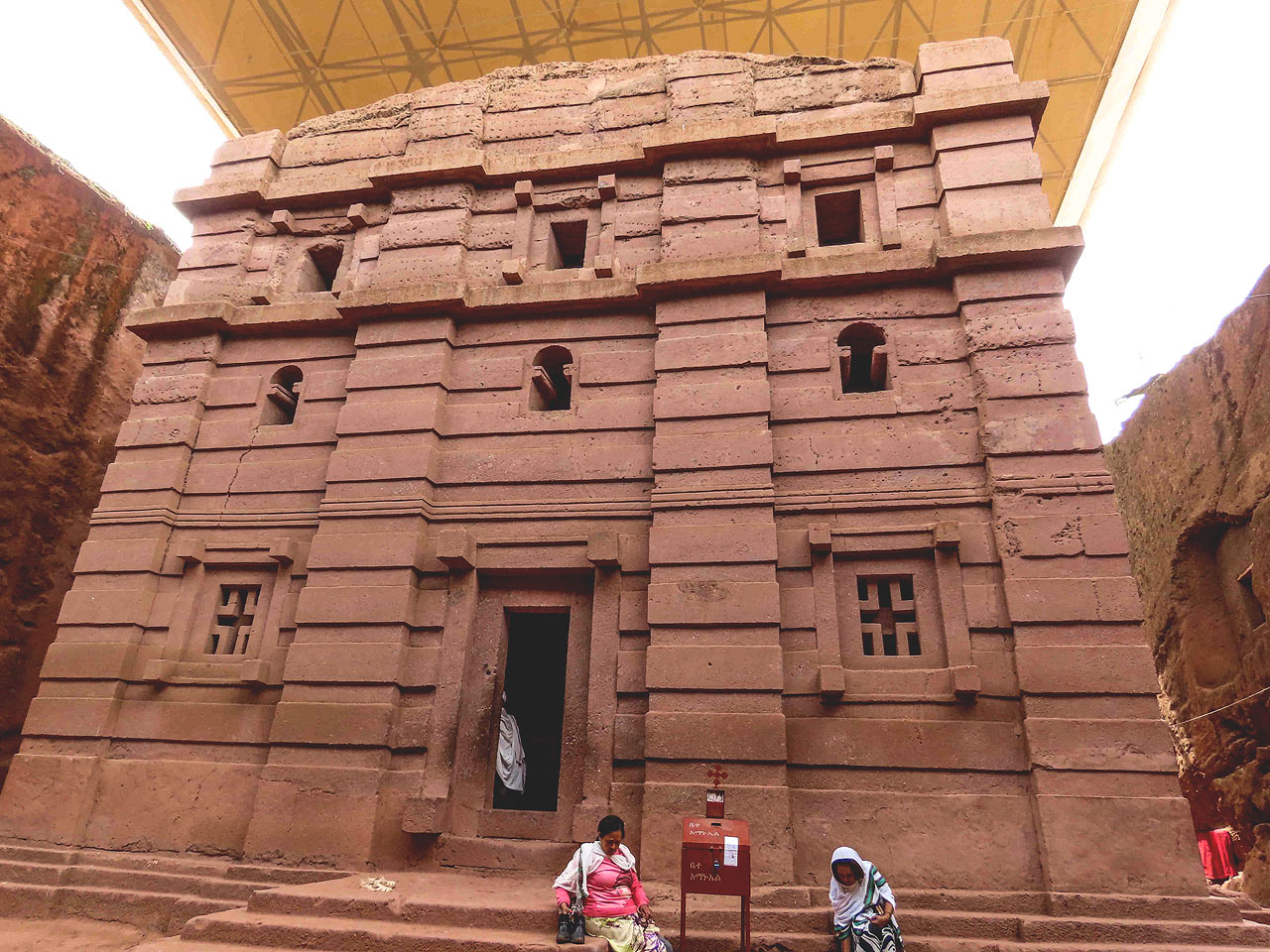
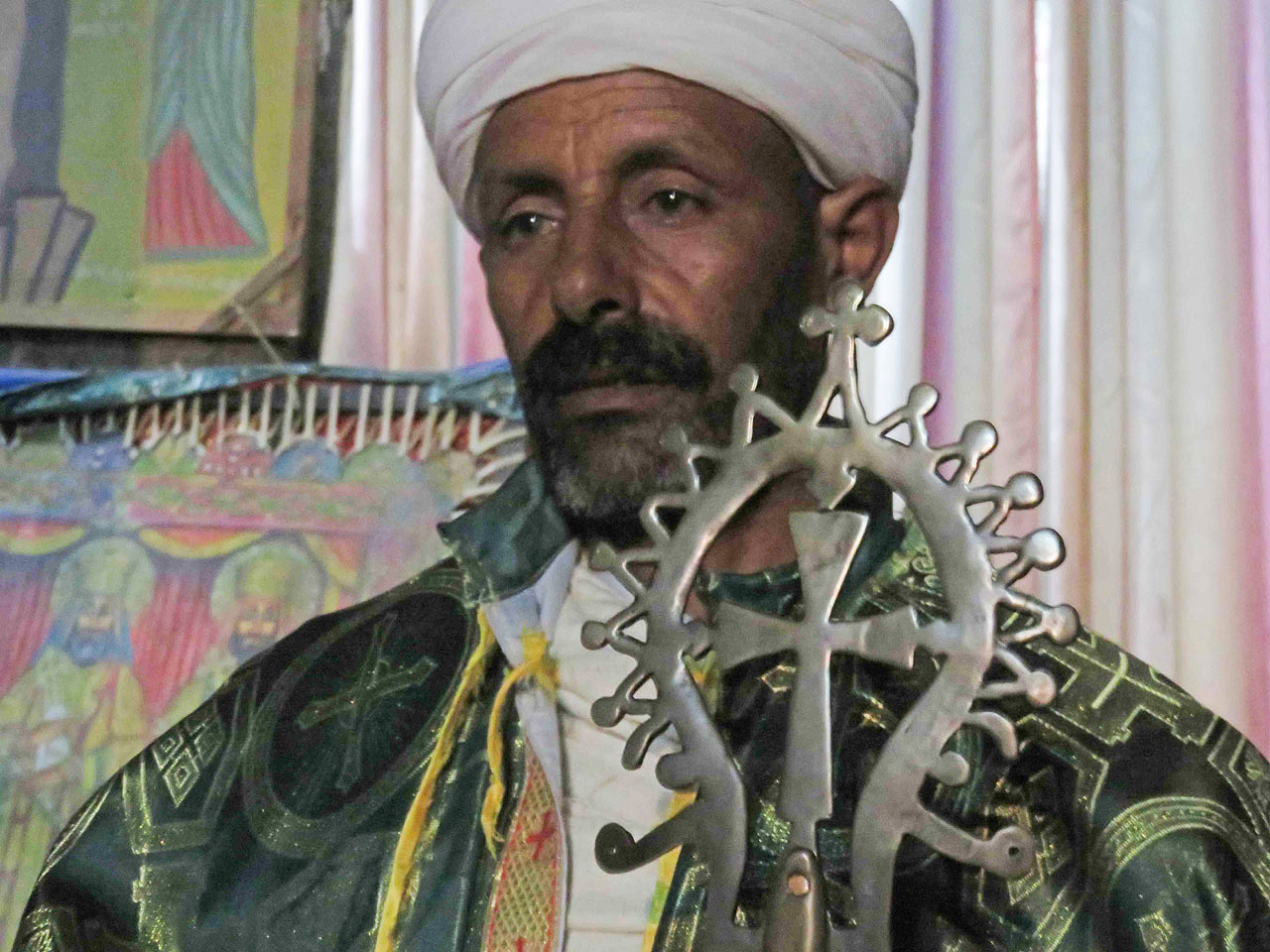
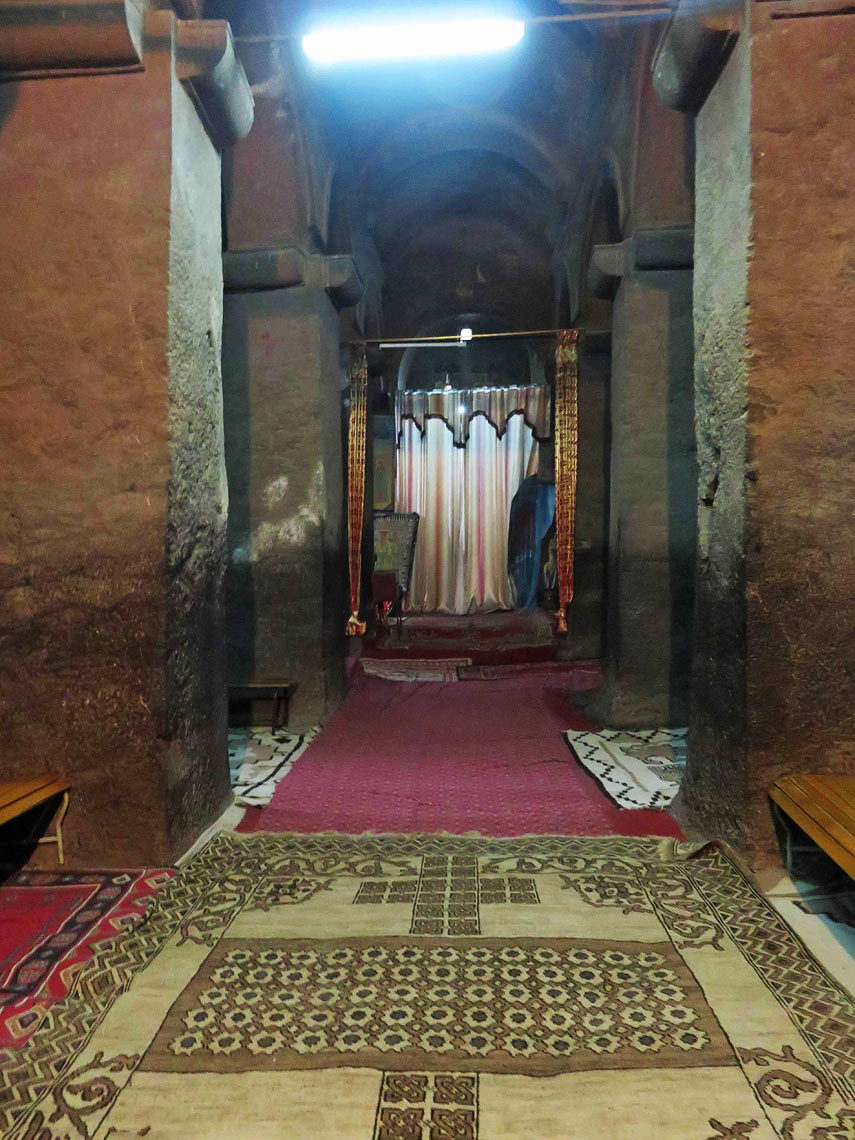
The next entire day we visited the 6 remaining churches and heard about the significance of the many monuments from our guide Kibrrom. He said that it is the wish of every Christian to go to Jerusalem, just as King Lalibela did.
However, the King realised that it would be impossible for most of his people, so he created a second Jerusalem in Lalibela. He had created a River Jordan, hewn out of the rock and leaving a large upstanding rock cross in the riverbed, to symbolise where Moses was found.
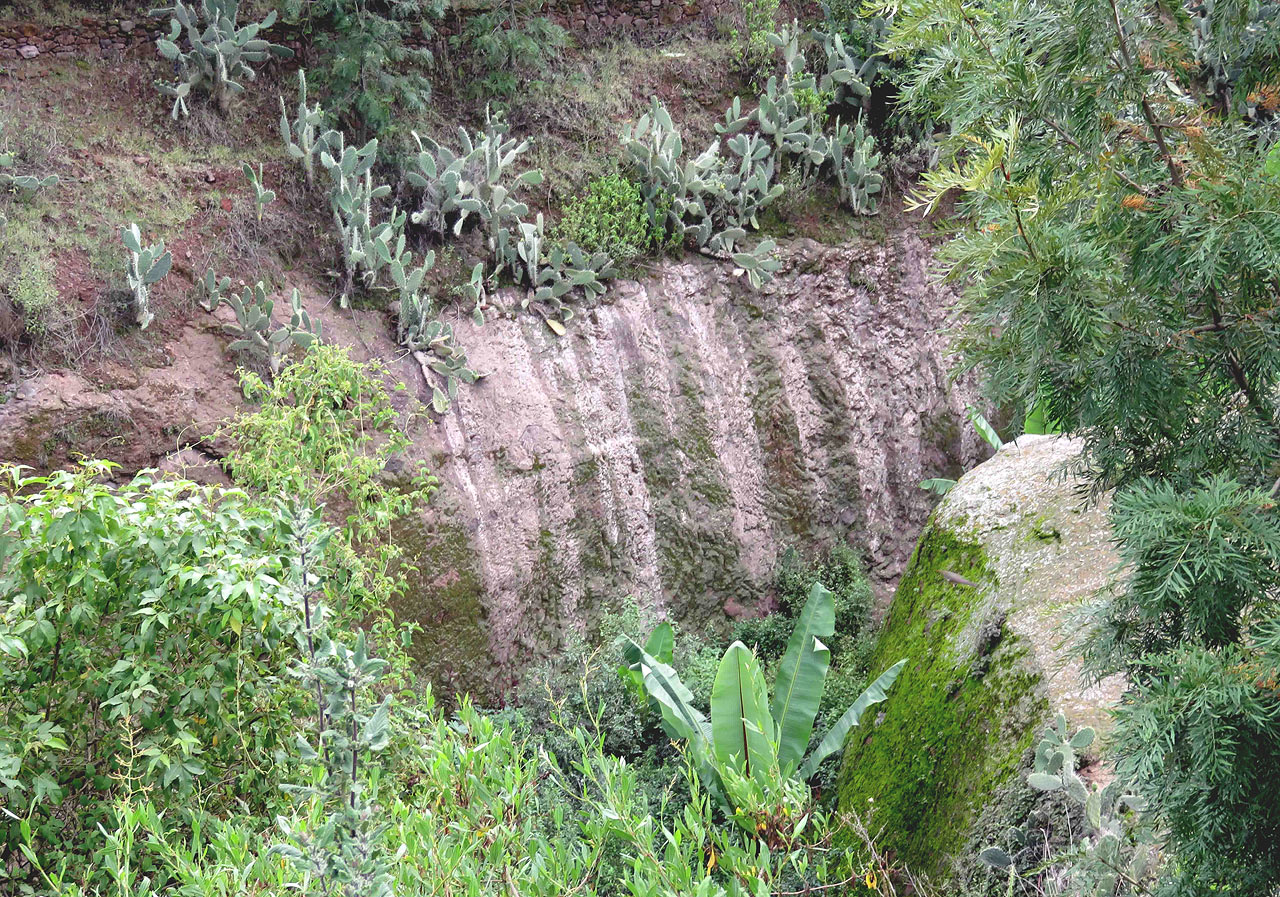
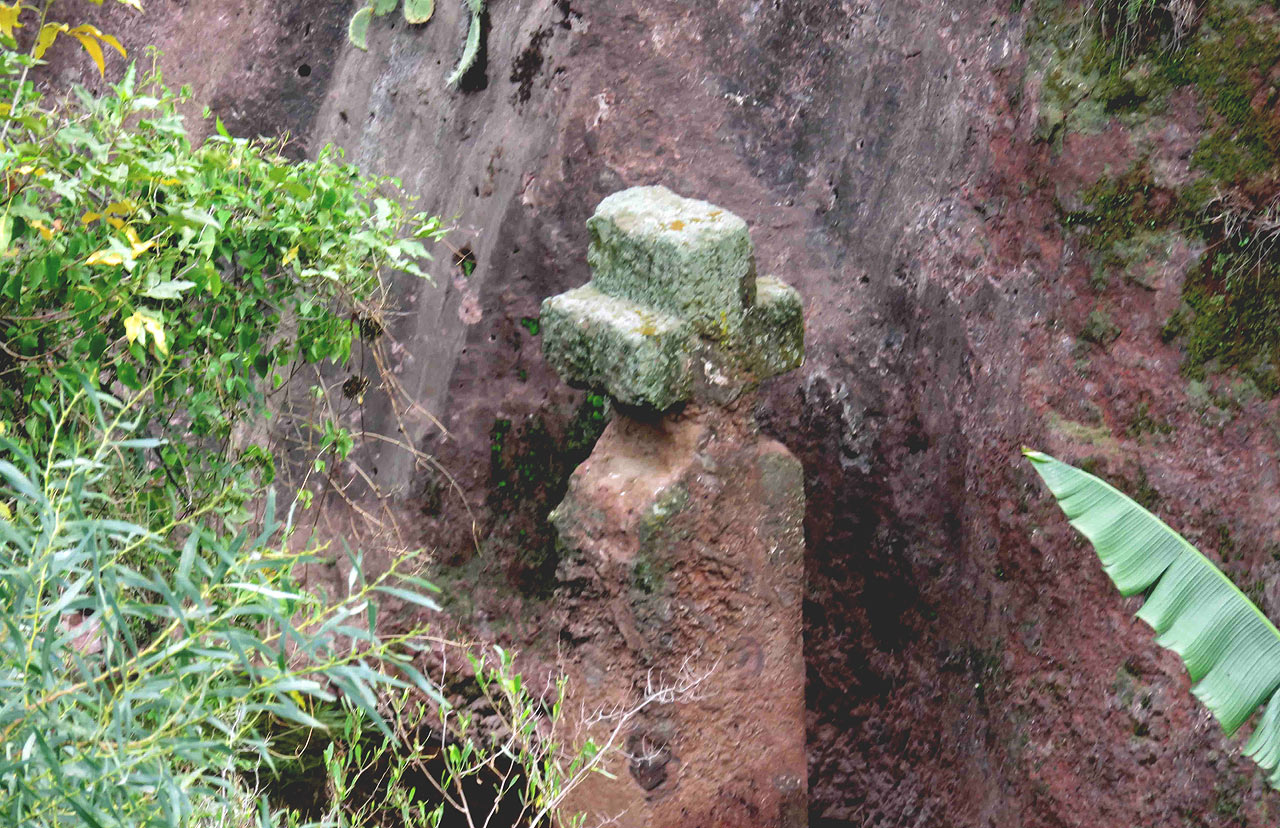
King Lalibela had also created a mud/hay monument symbolising the stable where Jesus was born.
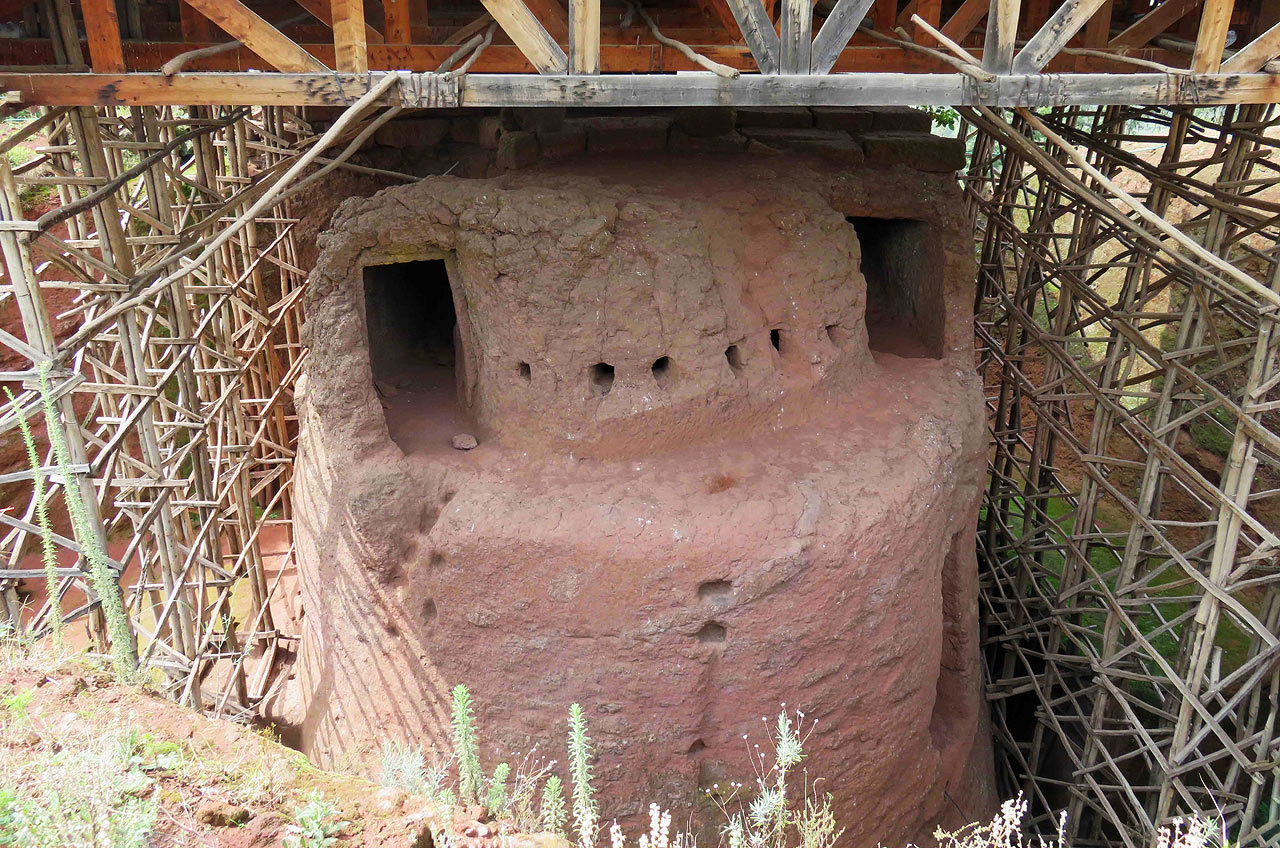
King Lalibela also created a stone wall with a very sharp incline to symbolise the path to heaven. People used to try and walk up this incline, but most failed, symbolising how hard it is to get into Heaven. If a person fell off the wall they generally died from their injuries.
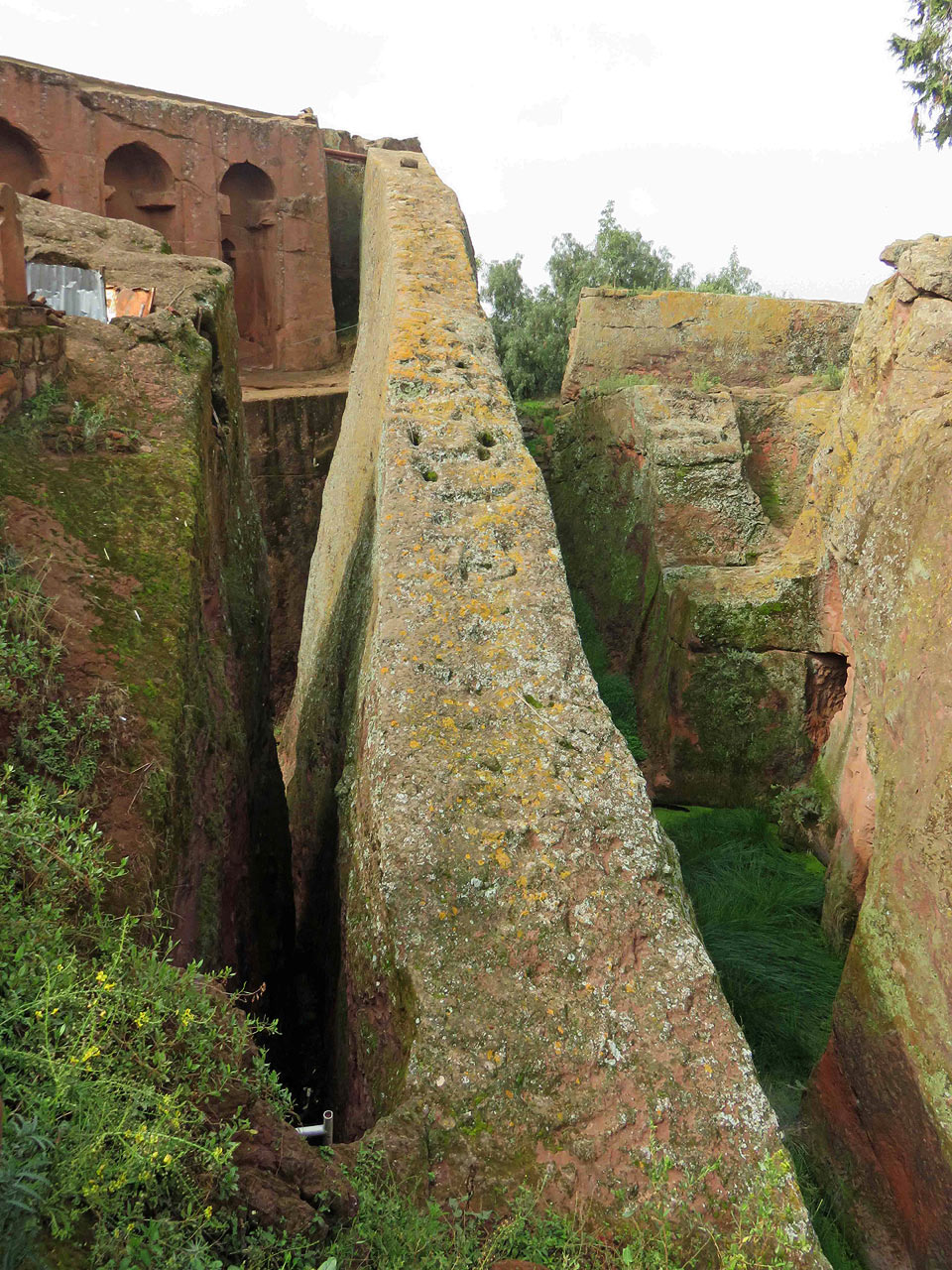
We also visited the twin Churches of St Raphael and St Gabriel which is thought to be where King Lalibela lived. The photo of us on the ‘balcony’ shows how massive the church structure is – that is, the rock from which the church is hewn.

For me, the most fascinating church is the Bet Giyorgis Church (St George of St George and the Dragon fame). This church has been carved into the ground while all the others are above ground level. Its flat roof is carved in the form of a Greek cross and this is the last church that King Lalibela commissioned.
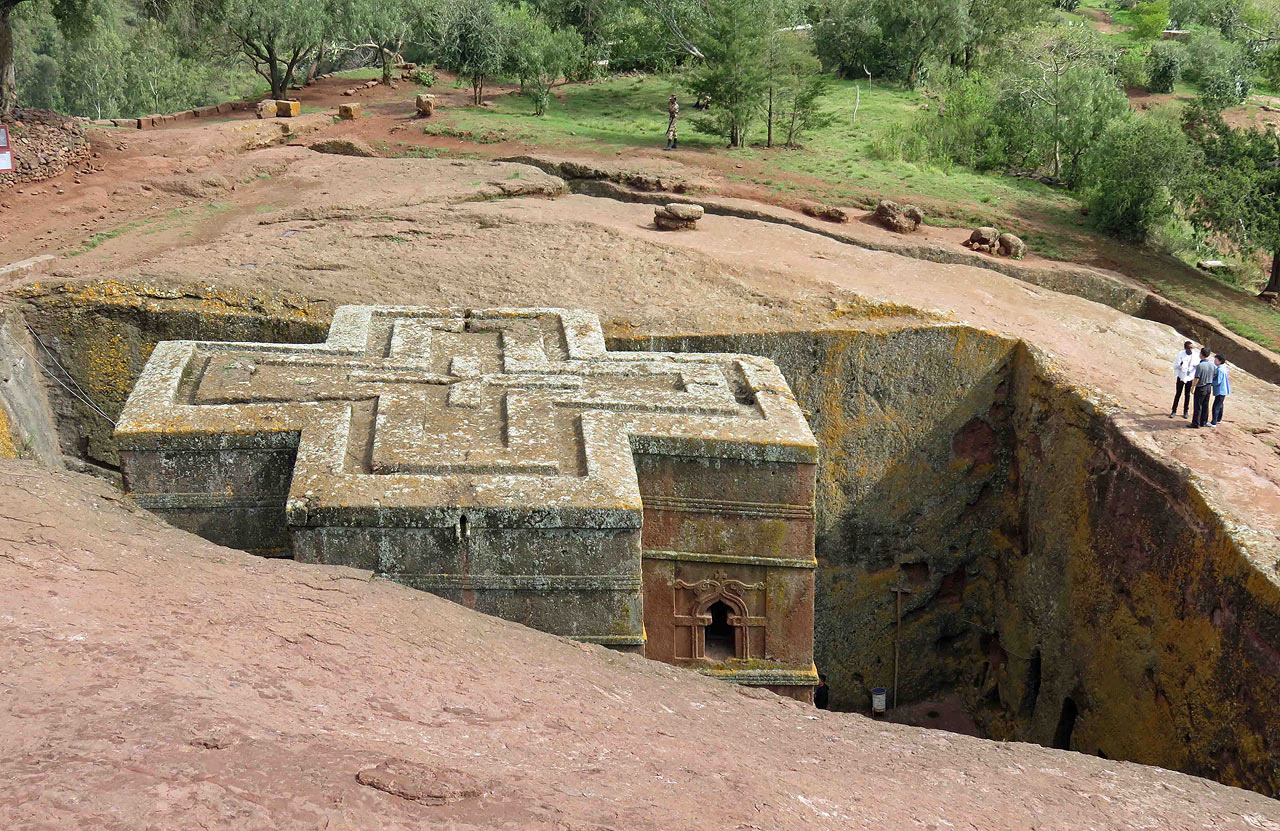
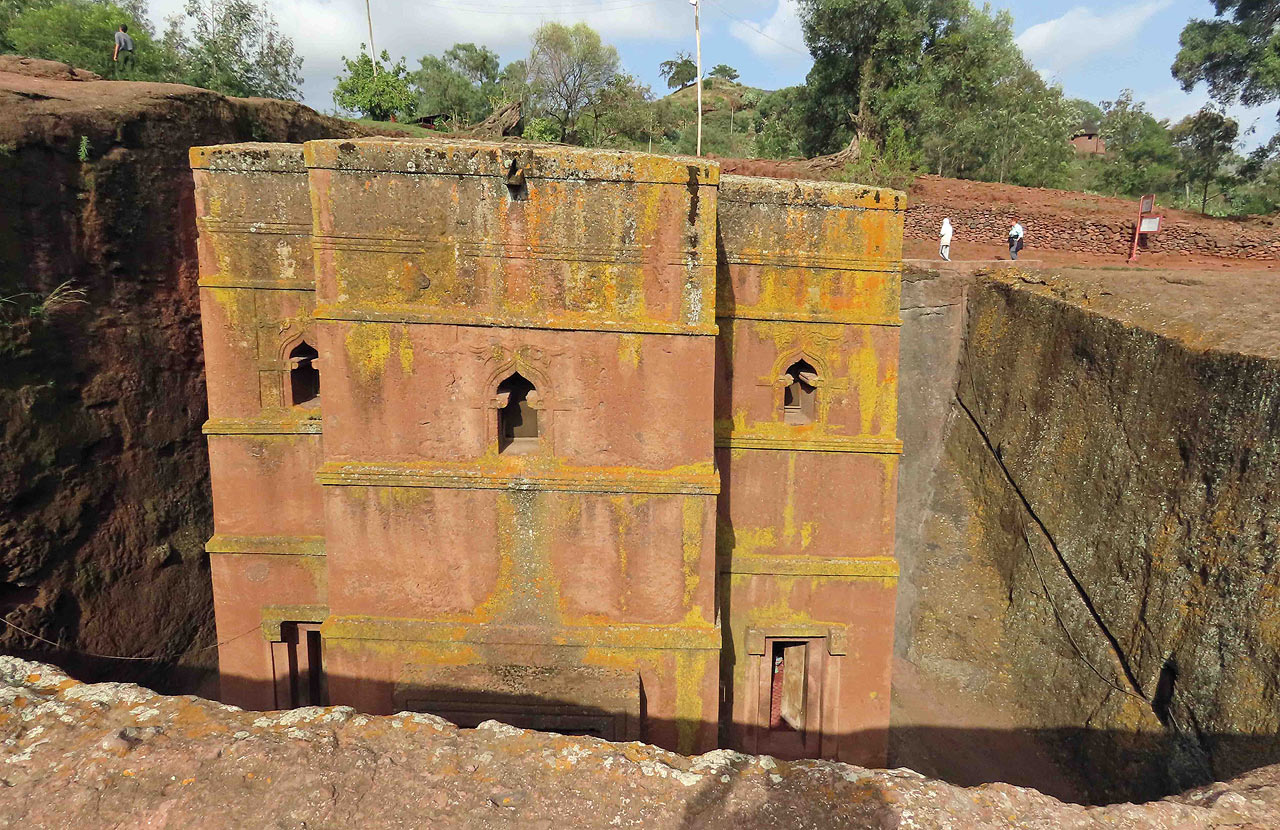
As we were looking down at the church, a beautifully dressed bride and groom emerged. Even they had to take off their shoes (as does everyone when entering a church in Ethiopia).
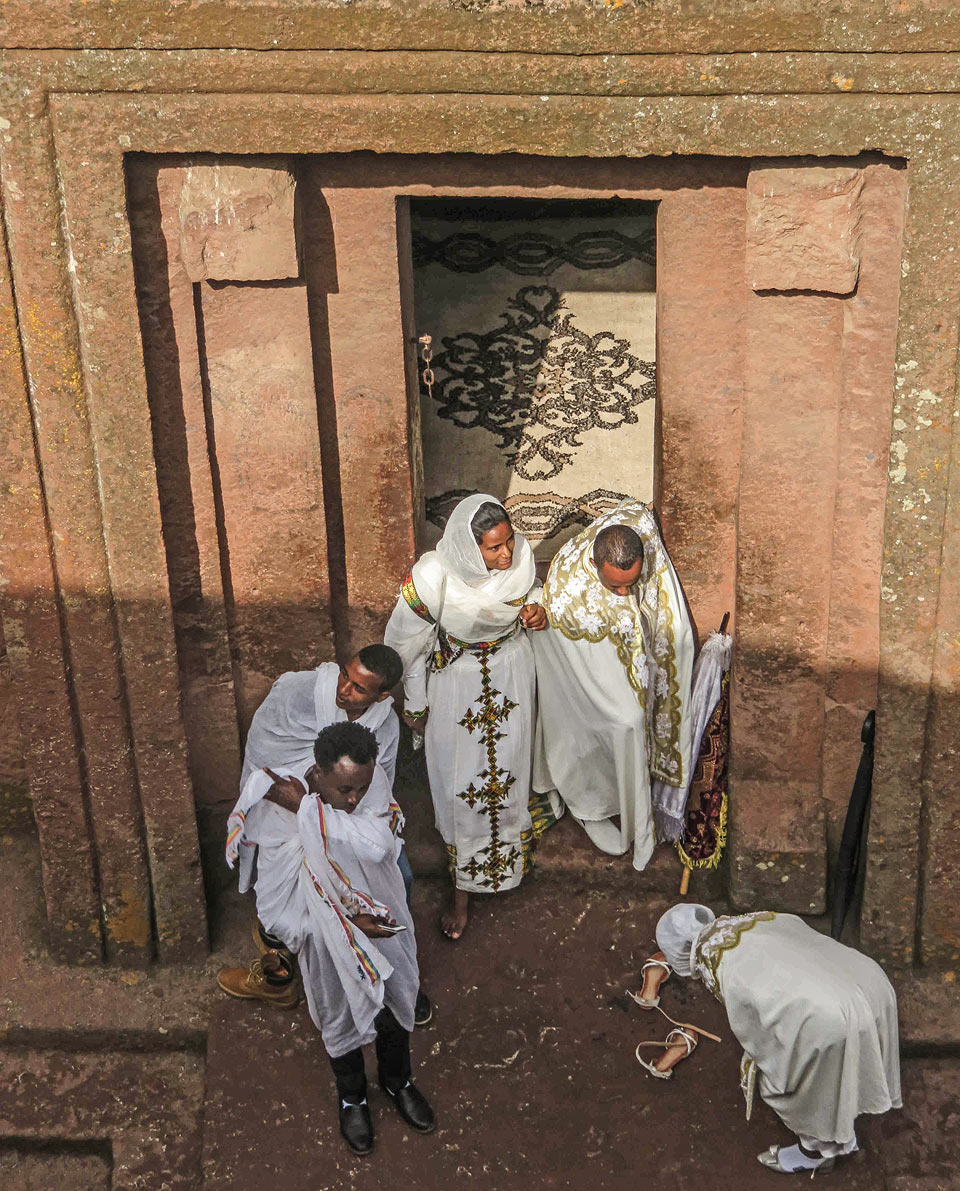
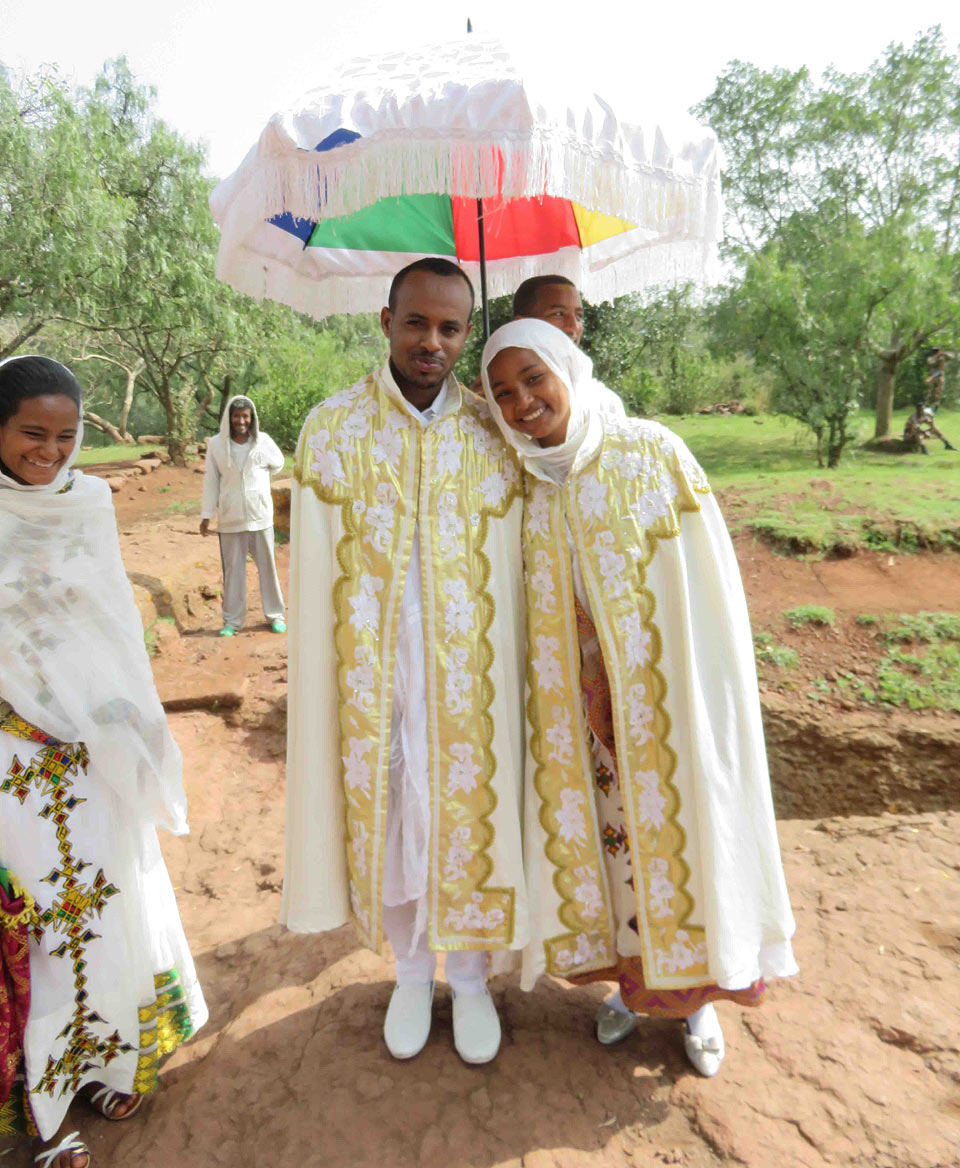
This church is carved to symbolise Noah’s Ark in many ways:-
- It is carved to represent three levels – one for the animals, one for the birds and reptiles and one for food.
- There is a circular groove carved in the ground outside the church to symbolise the rainbow that Noah saw at the end of the rains.
- One edge of the outside wall of the ground surrounding the church has not been carved out and the slope symbolises the Ark coming to rest on Mt Ararat.
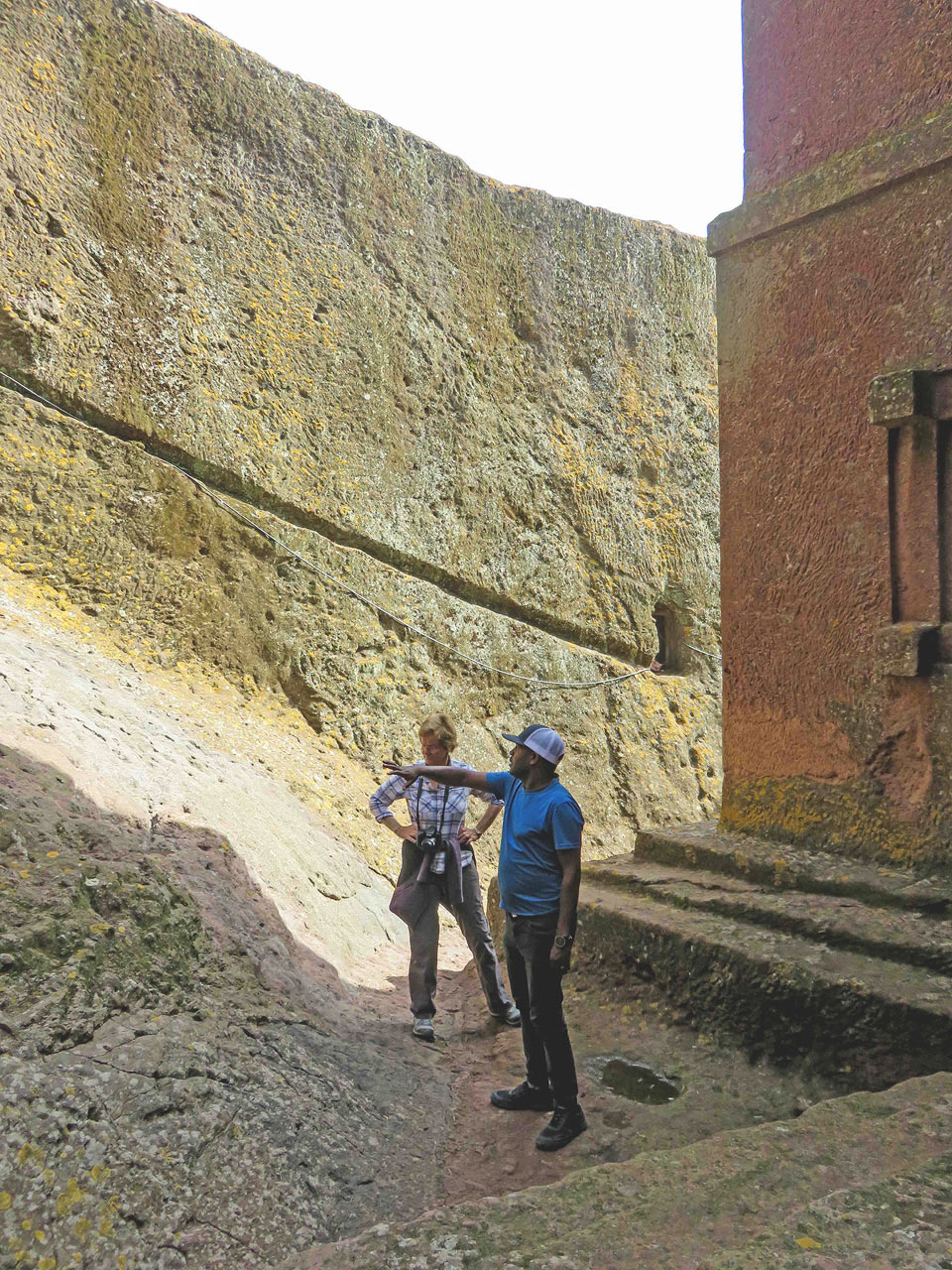
- There is a small garden of green reeds to symbolise the olive branch that the dove brought back to Noah.
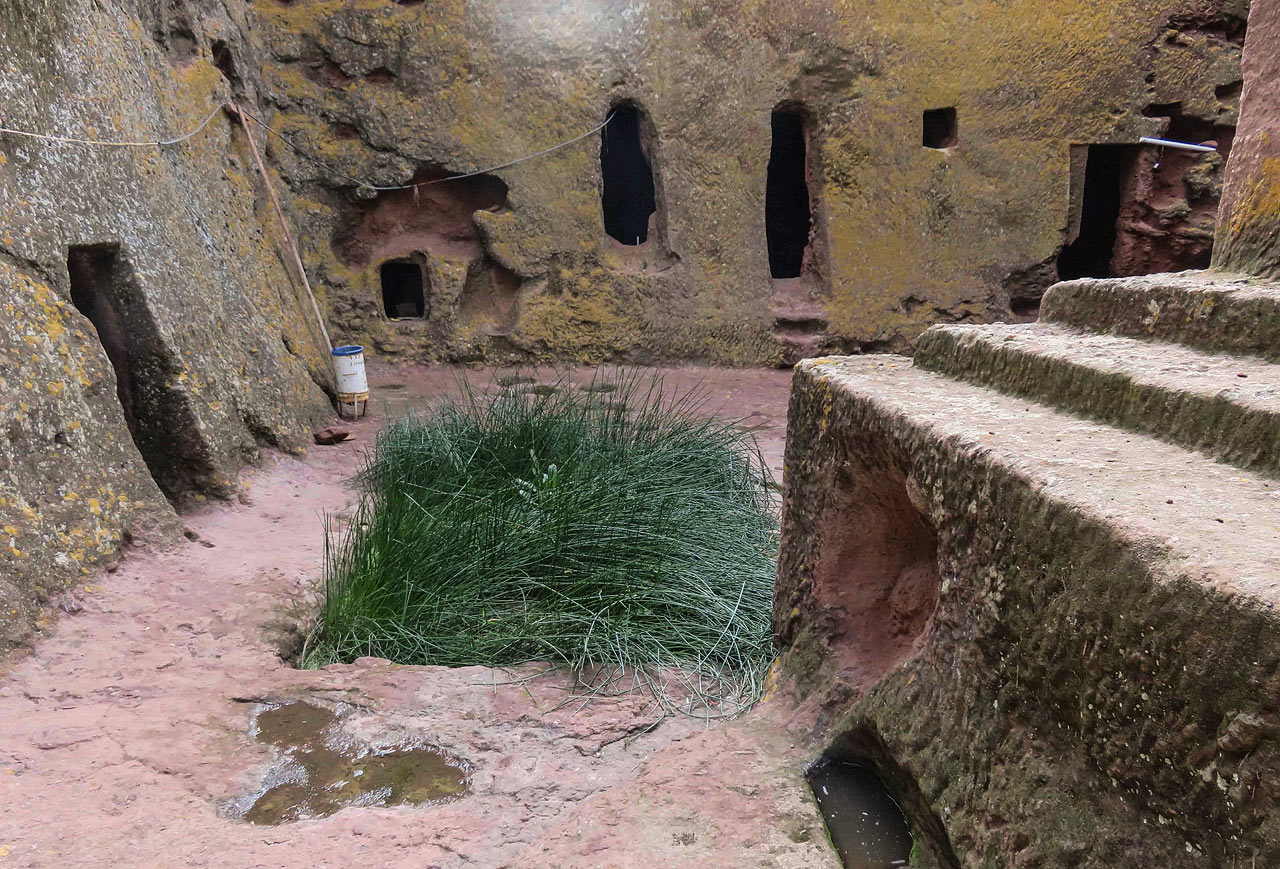
- There is so much religious symbolism to be found in so many things in Ethiopia, that when Kibrrom asked me what the symbolism of our Australian flag is, my answers seemed very insignificant.
Lalibela is a must for anyone visiting Ethiopia!






